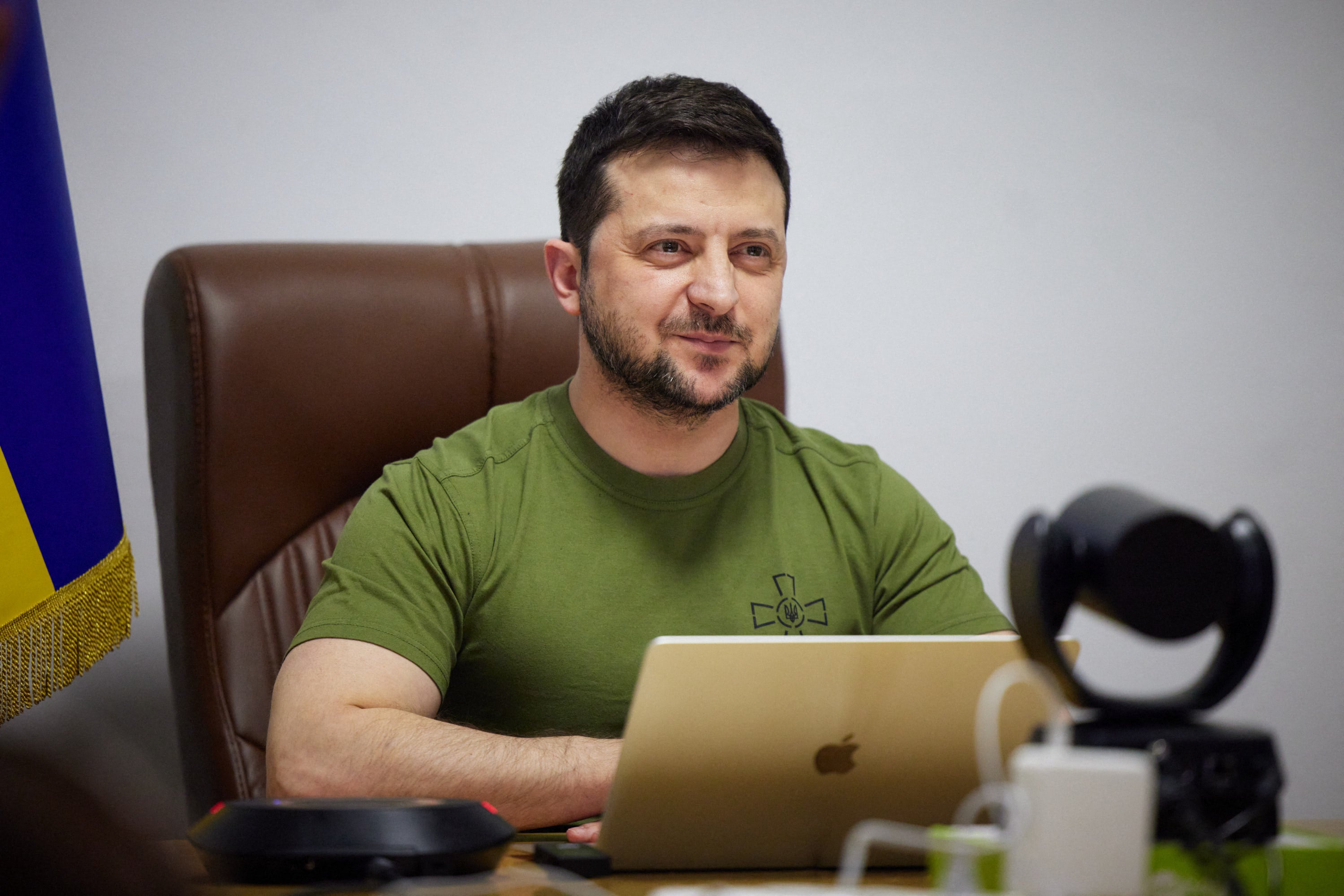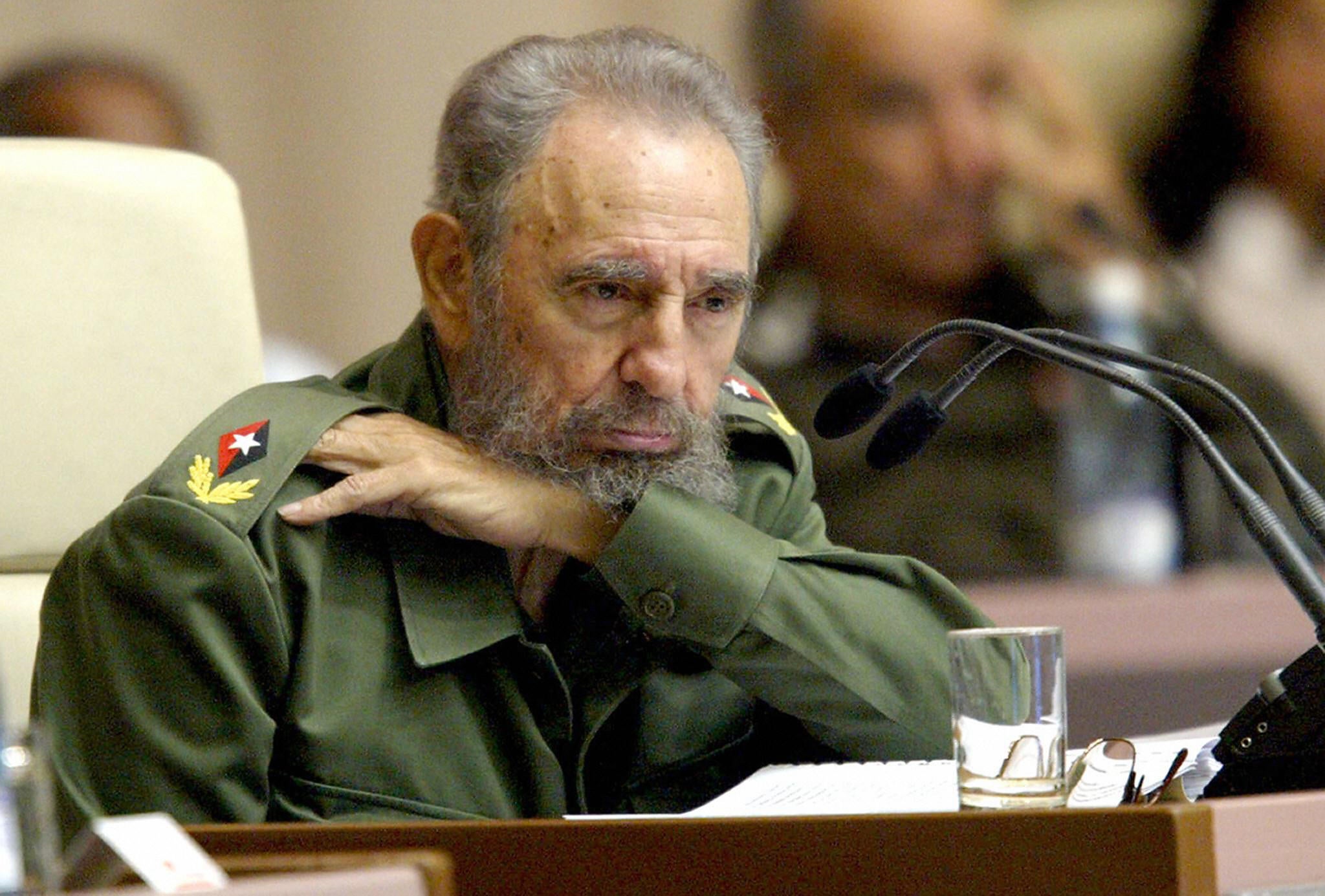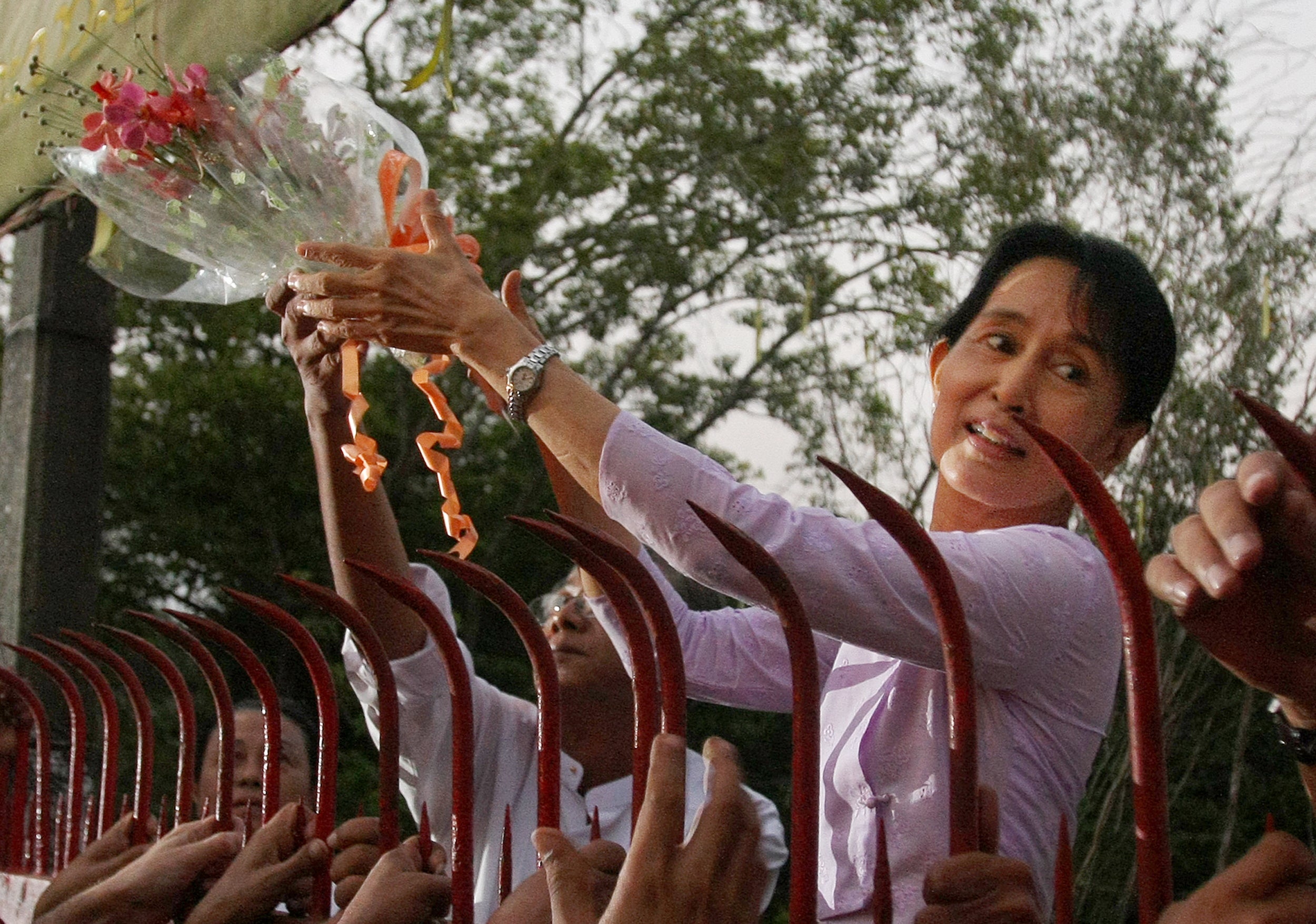How Ukrainian president Zelensky’s simple green T-shirt became an iconic message of defiance
Clothes can send a message, even when they are very basic indeed, writes Andrew Buncombe


Your support helps us to tell the story
From reproductive rights to climate change to Big Tech, The Independent is on the ground when the story is developing. Whether it's investigating the financials of Elon Musk's pro-Trump PAC or producing our latest documentary, 'The A Word', which shines a light on the American women fighting for reproductive rights, we know how important it is to parse out the facts from the messaging.
At such a critical moment in US history, we need reporters on the ground. Your donation allows us to keep sending journalists to speak to both sides of the story.
The Independent is trusted by Americans across the entire political spectrum. And unlike many other quality news outlets, we choose not to lock Americans out of our reporting and analysis with paywalls. We believe quality journalism should be available to everyone, paid for by those who can afford it.
Your support makes all the difference.There could barely be a simpler outfit.
A short-sleeved T-shirt in military olive green, sometimes bearing the symbol of Ukraine’s armed forces. Oftentimes it gets bunched up a little, as it digs into his biceps.
In the weeks that led up Russia’s invasion of his country, Ukraine’s president Volodymyr Zelensky usually wore a suit and tie when he addressed the nation. He made sure to stand in his presidential office, usually with the Ukrainian flag as a backdrop.
Yet, in recent weeks, as Russia’s forces have attacked city after city and sought to encircle the capital Kyiv, the besieged president has adopted more basic garb, and in doing so has presented a striking image to the people he addresses.
In speeches to the US Congress and the British and Canadian parliaments, and in video messages to his people, the 44-year-old leader has chosen to wear one of these green T-shirts, seated in a simple chair and appearing to be speaking from an artificially lit room that suggests an operations centre, or a bunker, or a combination of the two. There are no visual clues that could give away his whereabouts.
This week, Mr Zelensky delivered a high-octane speech to Congress in which he implored members of both chambers to do more to help Ukraine, and in particular to enforce a no-fly zone.
He started by evoking images of the Pearl Harbour attack of December 1941, which would take the US into the Second World War, and the al-Qaeda attacks of 9/11.
“Remember Pearl Harbour, terrible morning of December 7, 1941, when your sky was black from the planes attacking you,” he said through a translator.
When he closed, he spoke directly to his US counterpart Joe Biden, and he did so in English.
“I am addressing President Biden: you are the leader of the nation, of your great nation. I wish you to be the leader of the world. Being the leader of the world means to be the leader of peace,” he said. “Peace in your country doesn’t depend any more only on you and your people. It depends on those next to you and those who are strong.”
Mr Zelensky’s speech was loudly applauded and warmly received, and the US said it could be sending more military assistance to Ukraine, even if Mr Biden and other Nato leaders fear that imposing a no-fly zone would risk triggering an even more dangerous conflict with Russia.
Yet, it was also criticised in unlikely terms by an economist and stockbroker, Peter Schiff, who tweeted: “I understand times are hard, but doesn’t the President of the #Ukraine own a suit?”
Mr Schiff’s comments were widely mocked by people who praised Mr Zelensky for inspiring his nation, with the president’s hands-on approach appearing to be underscored by his sleeves-pushed-up look.
“He’s wearing clothes that connect him to the armed forces, without seeming militaristic, and sending a message that he is focused on practical matters,” Rebecca Arnold, senior lecturer in history of dress at the Courtauld Institute of Art in London, told The Independent.
“The colour is especially important for this – the garments connect with everyday people, making him part of their struggle, too, but the colour and repetition of these clothes make them a uniform for his leadership and suggest he is ready for action.”
She added: “He’s communicating, therefore, with those around him in government, but importantly, through digital and heritage media, he connects to his country’s people and the wider world. It’s the visual and material equivalent of his words – that the world must be united in action.”
Mr Zelensky is not the first leader during wartime or conflict to send such a message with his clothes.

During the Second World War, Winston Churchill was famously photographed in his black Homburg hat, puffing a cigar, as if to say “Carry on as normal” even as bombs fell on London and German forces marched across Europe.
Cuba’s Fidel Castro only ever addressed his nation, or the United Nations, wearing his military fatigues with emblazoned epaulettes, as if to remind the world of his revolutionary bona fides.
In the aftermath of 9/11, George W Bush made use of a firefighter’s loudhailer while visiting the smouldering rubble of the twin towers in Lower Manhattan, to announce: “I can hear you! I can hear you! The rest of the world hears you. And the people who knocked these buildings down will hear all of us soon.”
And for decades in Myanmar, opposition leader Aung San Suu Kyi would invariably be wearing a pressed silk longyi, emitting a sense of quiet, graceful defiance, when she was led away by the junta’s generals.
“Clothes reflect our emotions, passions and purpose. More broadly, they can make a statement about the state of our culture. The savviest leaders understand that what they wear can speak for them and send a message that is stronger than any speech,” said Hildy Kuryk, former director of communications for Vogue magazine and founding partner of Artemis Strategies.
“Although clothing is often discussed more extensively when analysing female leaders, the art of ‘looking the part’ is gender-neutral and universal. President Zelensky sends a clear message that he is embedded in this war, not a figurehead floating above it. He is in the fight and committed to staying with his people, regardless of the risks.”
She said that, unlike other leaders in history who have donned camouflage to signal that they are aligned with their military, Mr Zelensky “knows the fighters in Ukraine are the people of Ukraine. With each passing day, President Zelensky shows himself to be in solidarity with them – the ordinary people who woke up one day and were forced by circumstance to be defenders of their homeland or refugees abroad.”
Mr Zelensky’s appearance certainly appears to have made an impression on those who have spoken with him in recent weeks. It was widely reported that when he spoke to leaders of the EU, just days after his country was invaded, they were very much moved by his plight.
“This might be the last time you see me alive,” he told them.
The power of his words, and the obvious gravity of the situation, had a shuddering impact on those listening. Within hours, capitals across Europe – along with the United States – were coordinating a far more rigorous set of sanctions against Vladimir Putin than had ever been considered.
Things that had appeared impossible to settle on, such as the ejecting of Russia from the Swift banking system, were rapidly agreed to. Personal sanctions on Mr Putin were implemented.
There was more: Germany, which had an important relationship with Moscow, had already suspended its participation in the Nord Stream 2 gas project. Then German chancellor Olaf Scholz announced that Berlin was to spend €100bn ($113bn) on a major expansion of its military.
The plight of Ukraine, and its president, have also been noticed by the real world of fashion.

Earlier this month, Demna Gvasalia, the Georgian-born creative director of Balenciaga, dedicated the fashion house’s winter 2022-23 show to Ukraine and the millions of refugees fleeing the country.
Mail Onlinereported that a note was left on every seat at the company’s recent show in Paris, saying that while “fashion week feels like some kind of an absurdity”, cancelling the show would have meant “surrendering to the evil that has already hurt me so much for almost 30 years”.
Mr Gvasalia, 40, fled Georgia in 1993 when he was just 12, when the country went through a violent civil war. He later lived in Ukraine and Russia before moving to Germany.
“The war in Ukraine has triggered the pain of a past trauma I have carried in me since 1993, when the same thing happened in my home country,” he told reporters backstage.
Has Mr Zelensky’s decision to wear the T-shirt been thought through?
“I think it is intentional,” said the Courtauld’s Rebecca Arnold. “Even if it didn’t start out that way, the repetition of a few key garments sends a clear message that his focus is not on his clothes, and this is a kind of informal uniform.”
Join our commenting forum
Join thought-provoking conversations, follow other Independent readers and see their replies
Comments